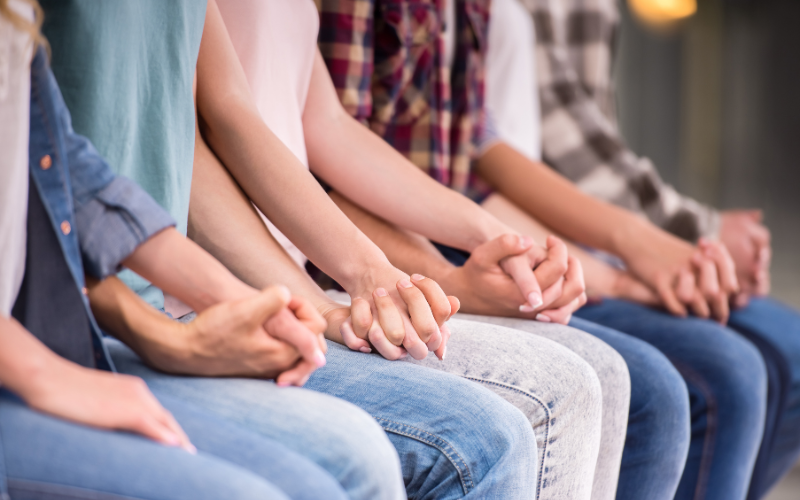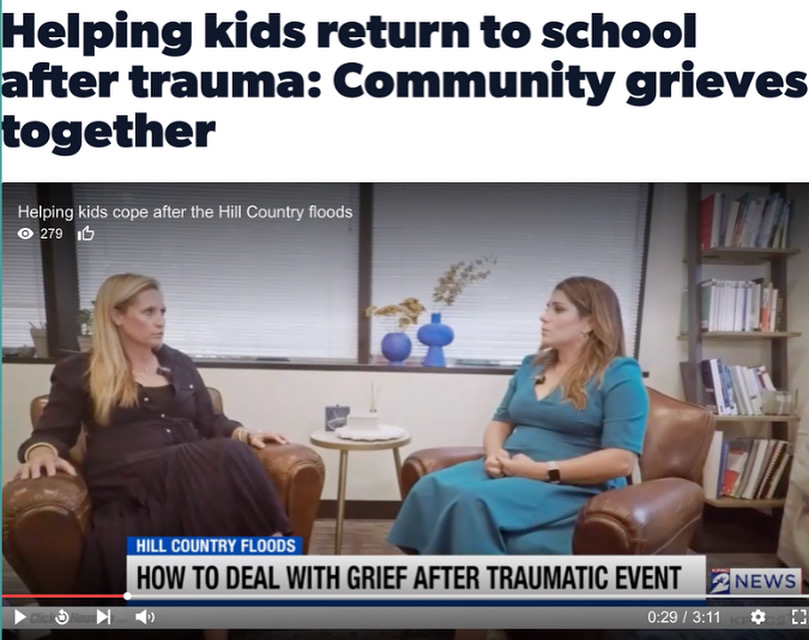
Table of Contents
In the aftermath of a natural disaster, it is common to feel overwhelmed, uncertain, and even disconnected. Here in Texas and beyond, our community has experienced the brutal, abrupt, and heartbreaking impact of the Hill Country floods of July 4th, 2025. First responders and on-the-ground, everyday heroes rushed in while the world watched, waited, and prayed. News of the devastation, names of the missing, and images of the destruction continued to slowly unveil the enormity of the event.
The Impetus for Grief: Loss
In its simplest terms, loss is the experience of no longer having something that is of great significance. The greatest loss any of us will ever face is the death of a loved one. Certain factors, including a loss being unexpected, a loss that involves a child, and multiple losses occurring simultaneously, all of which were characteristics of this tragedy, can lead to the loss of a belief that life is predictable and safe.
The sudden loss of this belief, that life is predictable and safe, not only impacts the families at the epicenter of each loss, it also effects the people who know and love and live in community with these families, and extends to those in their larger communities throughout Texas and beyond, whose hearts are both broken and full of empathy even though they have never met.
Understanding Individual and Collective Grief
Grief can be conceptualized as a response of deep sorrow to a significant loss. This deep sorrow can be expressed in a variety of ways. It is important to remember that all of these responses are valid because grief is a complex process that will look different for everyone. In fact, it might look different for a person day to day, hour to hour, and can even change moment to moment.
Collective Grief can occur when a large group of people experiences a shared loss. Regardless of an individual’s relational proximity to the recent event, it is not only “normal”, it is also healthy for adults and children alike to be grieving the tremendous loss from this tragedy. Collective Grief extends to include a secondhand grief that many encounter due to the loss others are experiencing firsthand. Collective grief flows out of compassion, empathy, and love.
Here are some responses to expect in yourself and others, including children and adolescents, as we all walk through collective grief together:
- Emotional and Cognitive Impacts: It’s common for grief to affect the mind. Grief is deeply emotional, often bringing waves of sadness, anger, regret, anxiety, and at times, guilt. People may struggle to concentrate, feel forgetful, and find their thoughts constantly returning to the loss and the events leading up to it.
- Physical Effects: Grief can take a toll on the body, showing up as fatigue, disrupted sleep, changes in appetite, and even unexplained aches and pains.
- Behavioral Shifts: Grief will likely change how someone moves through daily life. It could lead to only wanting to be with a certain group of people, pulling away from others altogether, losing motivation, and finding it hard to complete ordinary, daily tasks. It could manifest in a resistance to return to activities, such as work or school, and can heighten separation anxiety in children and parents alike.
- Spiritual: Grief often brings to light deep questions about meaning, purpose, and who God is. It can shift one’s spiritual perspective, bringing longstanding beliefs into focus or casting doubt.
Tools to Take Care of Yourself:
Emotion Regulation – Skill: Validation
Examples:
- “It’s okay to feel sad or angry—this is a huge loss.”
- “What you’re feeling makes sense given what we’ve been through.”
- “You are having a hard time because something very hard has happened.”
Validation: Simply acknowledging the feelings. First, we validate our emotions. Then, we look at our thoughts and actions to see what’s helpful in that moment.
Mindfulness – Skill: “What” and “How”
- Observe: Notice what’s happening inside you.
- Describe: Name it—“I feel scared,” “I feel lonely.”
- Participate: Stay present and decide what’s next without judging yourself
Environment and Rhythms –
Care for your body:
- Eat well.
- Take your medications.
- Get good sleep.
- Exercise daily.
Building a Healing Environment at Home:
- Spend time with family and friends.
- Offer structure and routines, and stay flexible.
- Don’t rush to “get over it.”
- Say often: “I’m here. I love you. We’ll figure this out together.”
- It’s okay to ask for space. It’s okay to ask for support.
Therapy as a Tool to Build Well-being
Connection is a key to healing.
Therapy is an avenue to expand connection. Therapy offers a safe, nonjudgmental space to process the pain of loss and the questions that follow. Guided support can lead to an understanding of the natural stages of grief, help explore the unique challenges faced, and develop healthy coping mechanisms needed to move toward healing and restored well-being.
Therapy can help your brain re-process loss and grief so it doesn’t feel like it’s happening over and over. Therapy can reconnect individuals and families to themselves and each other by helping them regain a sense of purpose and meaning.
Individual therapy, family therapy, group therapy, and support groups all help by providing you with tools to process and heal, as well as reminding you that you are not alone.
Tap video below to watch Click 2 Houston’s Segment on – Helping Kids Return to School After Trauma: Community Grieves Together, ft. Dr. Ceci Hudson-Torn as she talks about collective grief.

